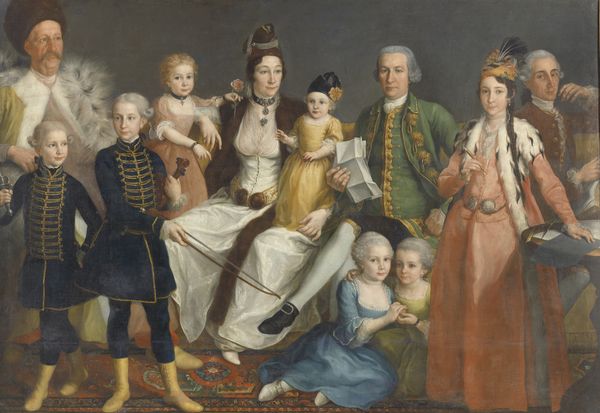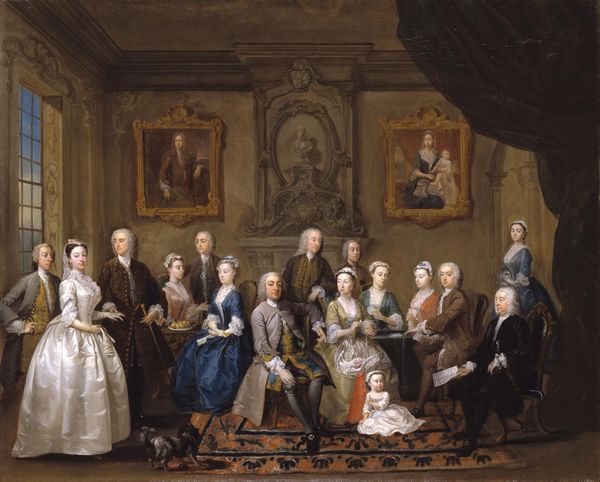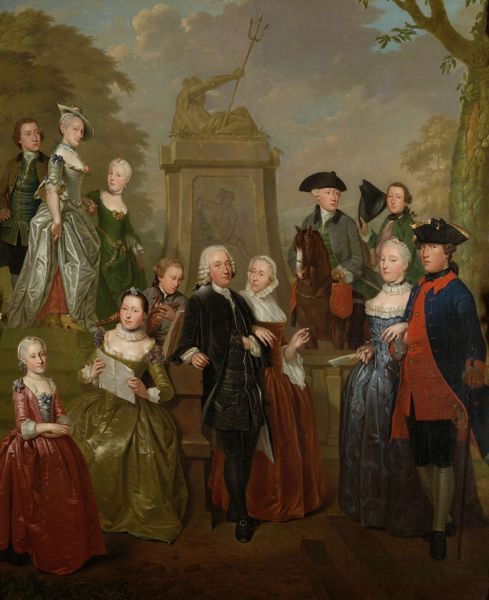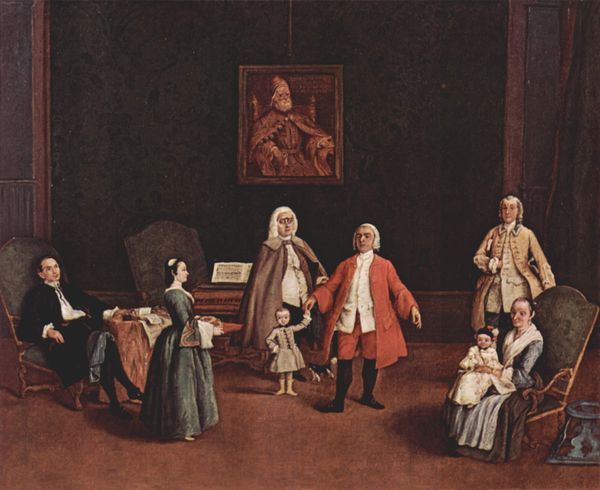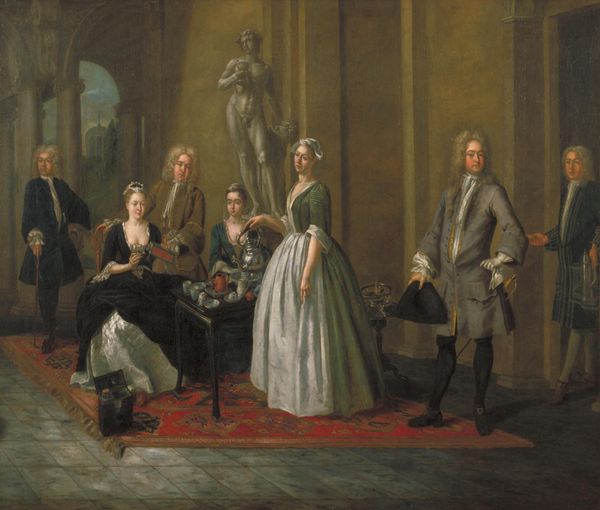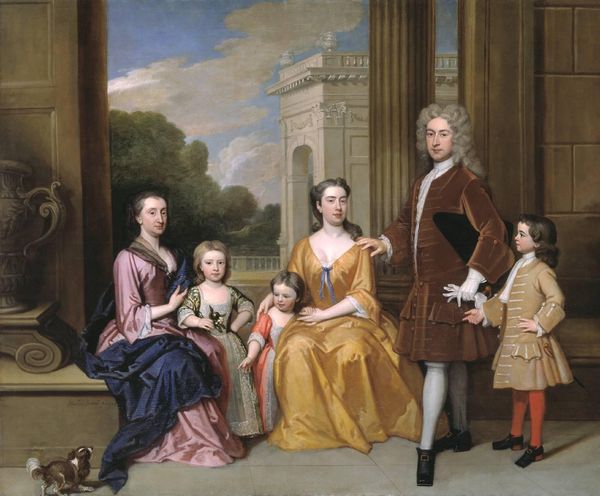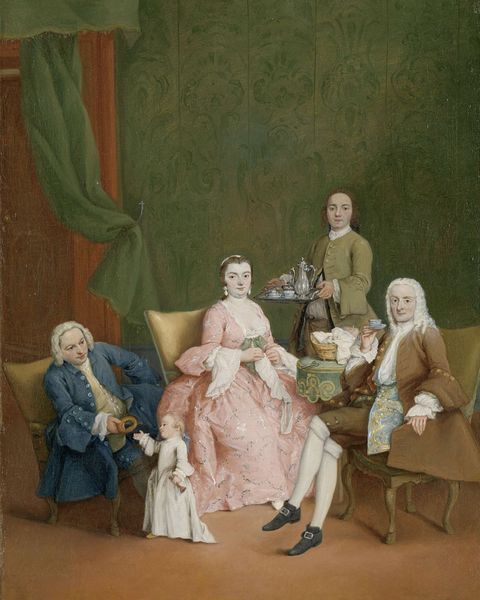
oil-paint
#
portrait
#
neoclacissism
#
oil-paint
#
oil painting
#
group-portraits
#
history-painting
#
portrait art
Dimensions: 24 1/8 x 19 3/4 in. (61.3 x 50.2 cm)
Copyright: Public Domain
Editor: This is *Portrait of a Military Family*, an oil painting dated between 1789 and 1790. It's currently housed at the Metropolitan Museum of Art. What strikes me most is the formal, almost staged, nature of the composition. How do you interpret this work? Curator: The formality you notice is characteristic of Neoclassicism. Think about the French Revolution brewing during this period. This portrait isn't just a depiction of a family; it's a statement about power, order, and the patriarchy’s role within both. How does their positioning—specifically the women’s—strike you? Editor: They do seem slightly removed, like they're there to support the central male figures, maybe? And even their elaborate dresses seem… constraining. Curator: Precisely. The women are positioned to highlight their roles in maintaining the family lineage, subservient to the military and social power of the men. Even the family dog seems symbolic, representing loyalty, yet also subservience. Considering this alongside the brewing revolution, do you see a tension? Editor: I do. It’s like they’re projecting stability amidst immense social change, while simultaneously solidifying gender and class hierarchies. Is the artist known? Curator: Sadly, the artist remains unknown, deepening the questions surrounding agency and representation. Is this an active political statement? Or a more passive expression of established norms that indirectly supports oppressive forces? Editor: It's fascinating to consider the multiple layers of meaning, especially how gender and power dynamics are visually encoded. It definitely gives me a new perspective on eighteenth-century portraiture. Curator: Agreed. Art of this era invites us to think critically about how societal structures are reflected, reinforced, or challenged through visual culture. It's a reminder that portraits can be powerful tools of ideology.
Comments
No comments
Be the first to comment and join the conversation on the ultimate creative platform.
